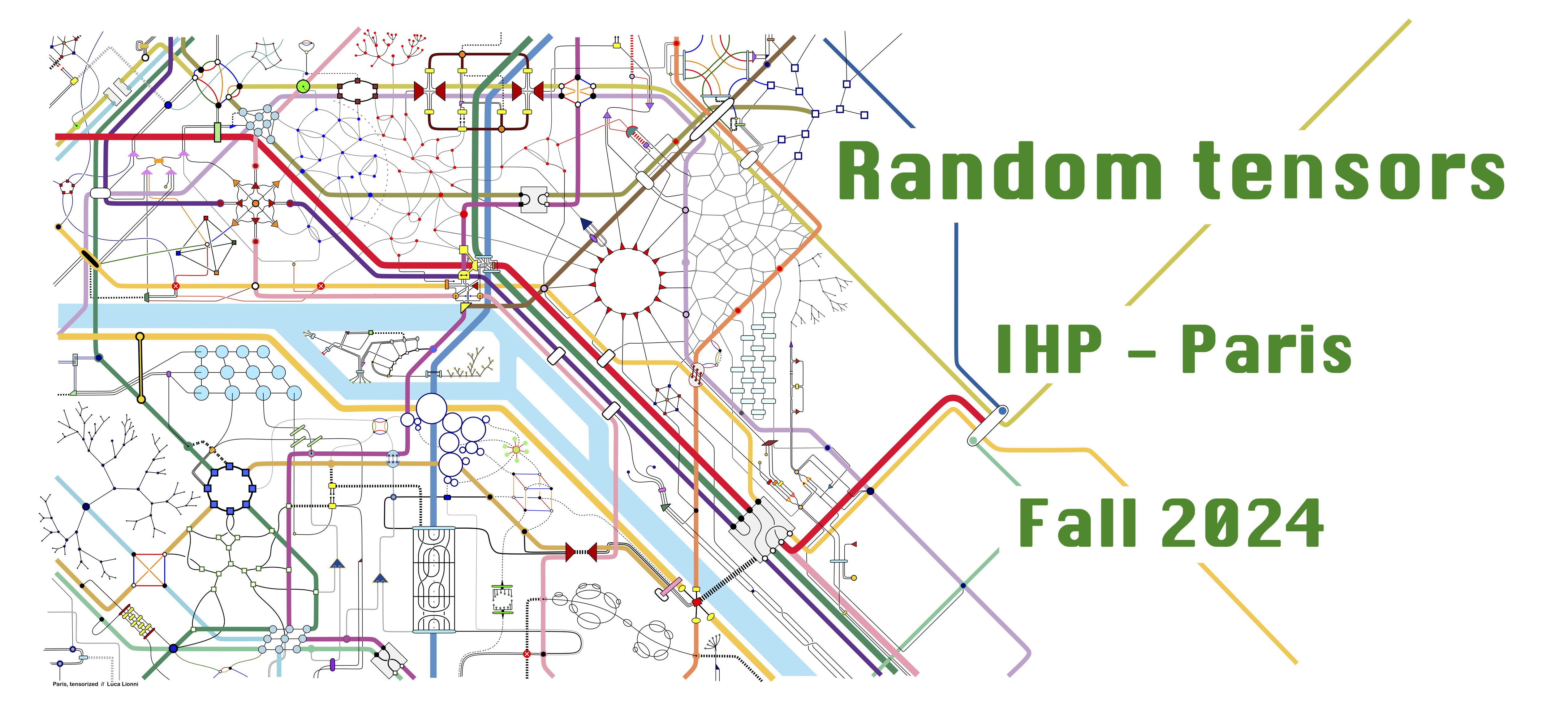
|
|
|
Program - week 2
>> COURSES
Guillaume Aubrun - Entanglement between cones
The goal of this mini-course is to present the solution to a conjecture by Barker, proving that the minimal and maximal tensor products of two finite-dimensional proper cones coincide if and only if one of the two cones is generated by a linearly independent set. Here, given two proper cones C1, C2, their minimal tensor product is the cone generated by products of the form x1 ⊗ x2, where x1 ∈ C1 and x2 ∈ C2, while their maximal tensor product is the set of tensors that are positive under all product functionals f1 ⊗ f2, where f1 is positive on C1 and f2 is positive on C2.
(Joint work with Ludovico Lami, Carlos Palazuelos, Martin Plavala)
The notes for the mini-course are available HERE.
Frédéric Holweck - The Geometry of Entanglement: From Projective Duality to Quantum Computers
Entanglement is a fundamental feature of quantum physics, indicating that an entangled multipartite quantum system cannot be fully described by understanding its individual components alone. This quantum property is considered a key resource for the development of quantum technologies and quantum computers.
The goal of this course is to illustrate, through examples, how classical algebraic geometry can be employed to describe and study the entanglement of pure multipartite quantum systems. The course will begin with the definition of the variety of non-entangled quantum states, identified as rank-1 tensors for a given format. I will demonstrate how this definition allows for the geometric description of certain classes of entanglement, how algebraic invariants can be utilized to distinguish between different types of entanglement, and finally, I will outline how these geometrical concepts could be applied to measure entanglement on quantum devices.
The notes for the mini-course are available HERE.
Mohamed El Amine Seddik - Spike Recovery from Large Asymmetric Random Tensors
This mini-course will provide a brief introduction to the theory of random matrices and tensors, with a focus on fundamental concepts and techniques for the spectral analysis of spiked models. The first part will introduce some fundamental tools such as the notion of Stieltjes transform and some classical random matrix results involving symmetric and non-symmetric spiked matrix models. The last part of the mini-course will focus on generalizing these results to spiked random tensors. The lectures will be self-contained and require only a basic knowledge of linear algebra, probability theory, and functional analysis.
The notes for the mini-course are available HERE.
>> JOINT DAY WITH MEGA ON FRIDAY 11
Afonso Bandeira - Towards a sharp non-asymptotic theory for structured random matrices (and tensors)
Matrix Concentration inequalities such as Matrix Bernstein inequality (Oliveira and Tropp) have played an important role in many areas of pure and applied mathematics. These inequalities are intimately related to the celebrated noncommutative Khintchine inequality of Lust-Piquard and Pisier. While these tend to be optimal when the underlying matrices are commutative, they are known to be sub-optimal in several other instances. Recently, we have leveraged ideas from Free Probability to fully remove the sub-optimal dimensional dependencies in these inequalities in a range of instances, yielding sharp bounds in many settings of interest. In this talk I will describe these results, some of the recent and ongoing work that it has sparked, and several open problems. Includes joint work with: March Boedihardjo (MSU); Ramon van Handel and Giorgio Cipolloni (Princeton); Petar Nizic-Nikolac, Anastasia Kireeva, Kevin Lucca, and Dominik Schroder (ETH); Xinmeng Zeng (Stanford); Dustin Mixon (OSU); Dmitriy Kunisky (Johns Hopkins); Thomas Rothvoss (U Washington); Haotian Jiang (U Chicago); Sivakanth Gopi (MSR).
Henrique Goulart - Spiked tensor models through the prism of random matrix theory
Numerous problems in signal processing, machine learning and beyond can be addressed by decomposing some low-rank structure hidden in a noisy observed data tensor. While several algorithms exist for this task, little is generally known about their actual performance in practice, and also about fundamental statistical limits. Substantial progress has been recently made in the rank-one, large-dimensional case. In particular, we have proposed an approach based on tools from random matrix theory for studying the maximum likelihood estimation of the so-called spiked (rank-one) tensor model. In this talk, I will introduce this approach and discuss some recent extensions by us and others, notably to the study of deflation schemes for tensor decomposition.
Yizhe Zhu - A non-backtracking method for tensor completion
We consider the problem of low-rank rectangular matrix completion in the regime where the matrix of size n x m is “long”, i.e., the aspect ratio m/n diverges to infinity. Such matrices are of particular interest in the study of tensor completion, where they arise from the unfolding of a low-rank tensor. When each entry is observed with probability (d/mn)1/2 and d is above a Kesten-Stigum-type threshold, we propose a new spectral algorithm for recovering the singular values and left singular vectors of the original matrix. This spectral method is based on a variant of the standard non-backtracking operator of a suitably defined bipartite weighted random graph, which we call a non-backtracking wedge operator. As an application, for low-rank order-k tensor, we efficiently achieve weak recovery with sample size O(nk/2).
|

